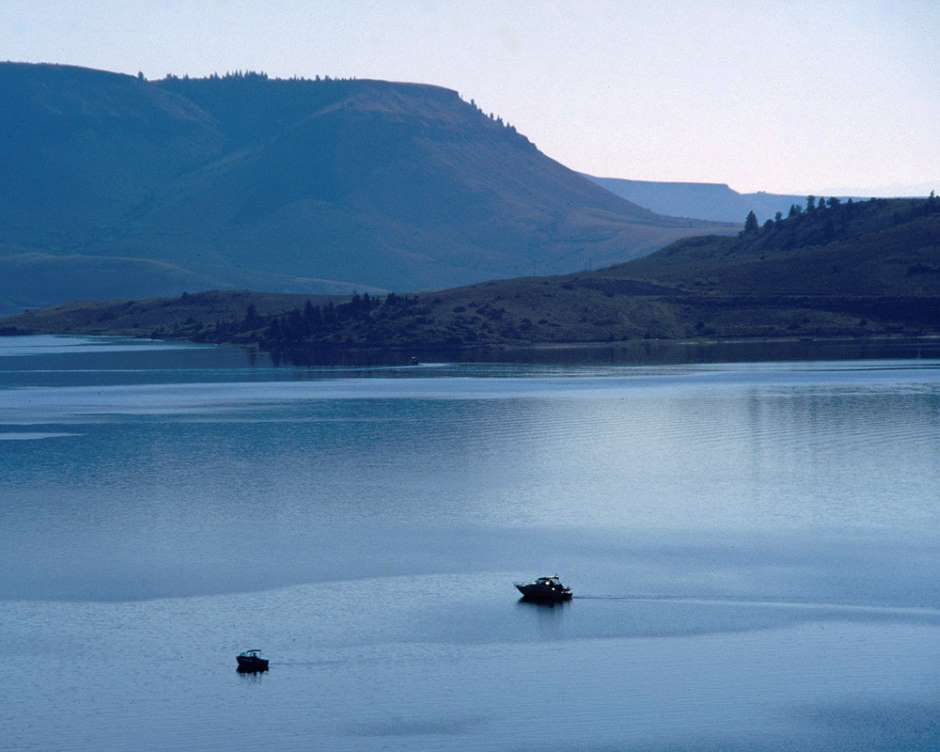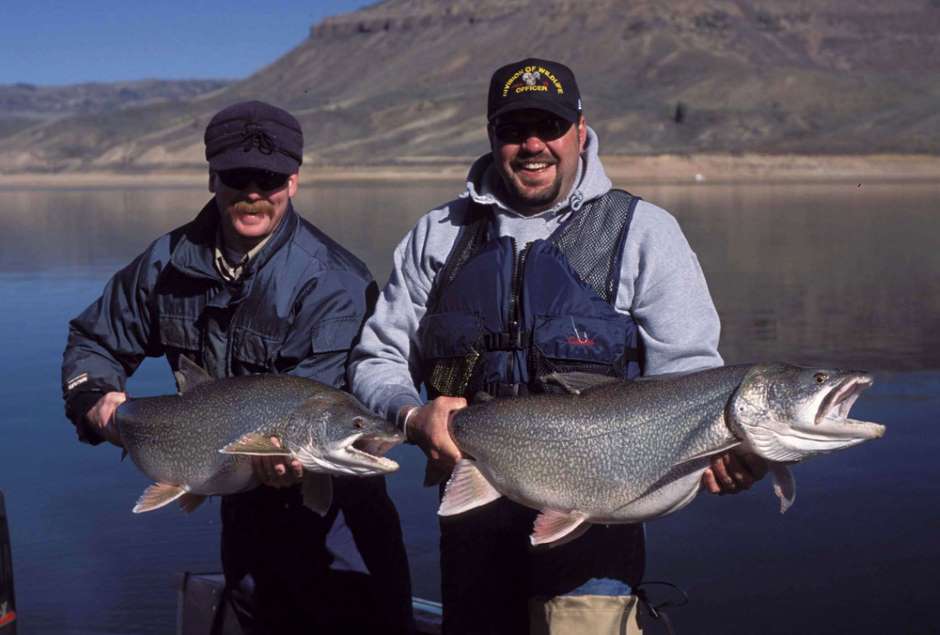On Blue Mesa Reservoir, managers balancing surging lake trout and collapsing kokaneev
 Boats on Blue Mesa Reservoir, the largest body of water in Colorado (Credit: NPS/Lisa Lynch)
Boats on Blue Mesa Reservoir, the largest body of water in Colorado (Credit: NPS/Lisa Lynch)It’s a common story in lakes of the West: Lake trout stocked there, outside their native range, thrive and grow to trophy size, but do so at the expense of other trout and salmon species.
It happened in Colorado’s Blue Mesa Reservoir, which has given up four straight state-record lake trout while the popular kokanee salmon fishery collapsed. Fishery managers are working restore the balance, removing lake trout through an aggressive gill netting program while encouraging anglers to keep more trout.
The netting has angered some lake trout fishermen, but a recently published study shows that managers can likely strike a balance between a healthy salmon fishery and enough large lake trout to keep trophy hunters happy.
Researchers at Colorado State University and the state’s Parks and Wildlife department modeled Blue Mesa lake trout and kokanee populations and predation between the two. They found that the state will actually need to ramp up the lake trout removal program if they want to keep kokanee from disappearing. But they can likely do so in a way that leaves hundreds of yard-long trout for trophy anglers.
Lake trout, or mackinaw, have done well across the West’s lakes, which offer a longer growing season and plenty to eat. But that food source is often a native or introduced (but still popular) trout or salmon species, whose rapid declines prompt lake trout control programs:
- On Wyoming’s Yellowstone Lake, where illegally introduced lake trout have taken a serious bite out of the native Yellowstone cutthroat trout population, 1.3 million lake trout have been netted and killed since 2000, and anglers are required to kill any they catch;
- On Montana’s Flathead Lake, stocked lake trout took out the kokanee salmon and native cutthroats and bull trout Lake, prompting gillnetting and frequent “Mack Days” tournaments that boost harvests;
- On, Idaho’s Lake Pend Oreille, lake trout were trouble for kokanee and bull trout, though both have shown signs of recovery since the state began gillnetting and put a $15 bounty on lakers.
Colorado stocked lake trout in Blue Mesa Reservoir for decades without any signs that the fish were reproducing naturally. But by 1992, the population suddenly looked to be self-sustaining. Creel surveys and modeling conducted for the new study suggests the lake trout population in Blue Mesa tripled from 2002 to 2011.

Division of Wildlife employees Matt Thorpe and Bob Carochi with lake trout caught on Blue Mesa Reservoir (Credit: Kevin Rogers/Colorado Parks and Wildlife)
Meanwhile, the state estimates the number kokanee of has dropped from around 1 million to just 165,000 in 2014. At that rate, it appears that the lake trout could very well eat every last kokanee in the reservoir. That would be bad for the state, which harvests eggs from Blue Mesa kokanee to raise in hatcheries and stock in around 25 other reservoirs around Colorado. Kokanee anglers also bring about $5 million in economic activity the area around the reservoir, according to a 2009 study.
On one hand, the lake produces some gaudy fish: Lake trout growth rates there are some of the highest in North America, and the current state record holder is a 50-pound fish caught in 2007. On the other, state surveys have shown just 7 percent of anglers on Blue Mesa are there for the lake trout, as opposed to 45 percent there for lake trout. But that smaller group is very dedicated to their species, and they aren’t happy about a gillnetting program that has killed 6,000 lake trout since it began on the reservoir five years ago.
The new study’s modeling shows even at the current netting rate, the kokanee population could be virtually gone within 2 years. But if the state nets more fish — especially targeting 4-year-old trout — the modeling showed the kokanee stabilizing while leaving around 400 trophy-sized lake trout in the reservoir. Managers could target that age class of fish, which does more collective damage to the kokanee than larger fish, through strategic net placement and mesh sizes.
But netting is expensive, so the authors also recommend doing more to encourage anglers to keep the lake trout they catch, especially since anglers already harvest more lakers than the netting program. The authors also warn that while a balance between trophy lake trout and kokanee appears to be possible in Blue Mesa Reservoir, that might not be work in other lakes across the West where lakers have become an ecological nuisance.



0 comments